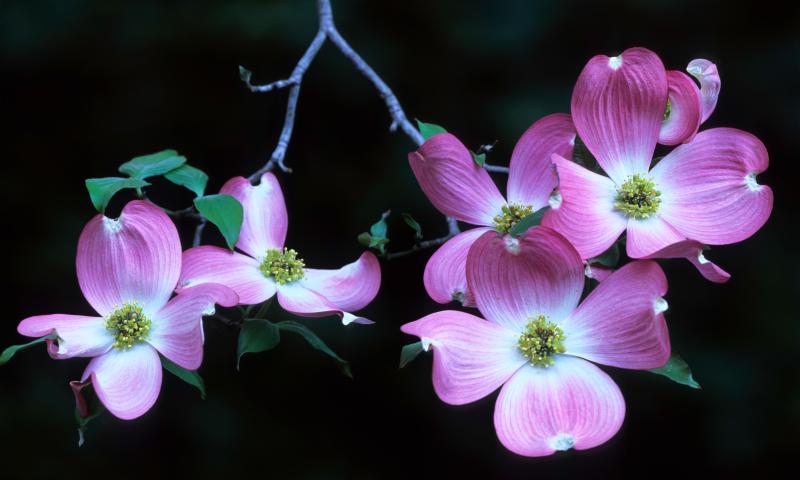 />
/>
Dogwood, scientifically known as Cornus florida, is a captivating tree native to eastern North America. This elegant tree is not just renowned for its breathtaking blossoms but also for its unique characteristics, historical significance, and valuable chemical composition. In this article, we'll explore the botanical characteristics, habitat, chemical composition, historical facts, taste, general health benefits, and indications for use of the dogwood tree.
Botanical Characteristics:
Dogwood (Cornus florida) belongs to the Cornaceae family. It is a deciduous tree that can grow to a height of 15 to 30 feet, displaying a broadly pyramidal shape. The distinctive feature of the dogwood is its striking white or pink flowers, which appear in early spring before the leaves emerge. These flowers are actually bracts, modified leaves that surround the true flowers, which are small and inconspicuous. Dogwood leaves are simple, opposite, and ovate, with a smooth, glossy surface. In the fall, the leaves turn a deep red, making the tree a beautiful spectacle in various seasons.
Habitat:
Dogwood is primarily found in the eastern United States, from southern Maine to northern Florida and westward to eastern Texas. It thrives in rich, moist, and well-drained soils, often found in woodlands, forests, and along the edges of streams and rivers. Its preferred habitat is generally characterized by dappled sunlight, providing the ideal conditions for its growth.
Chemical Composition:
While dogwood's primary appeal lies in its appearance and historical significance, it also possesses certain chemical compounds that contribute to its potential health benefits. Some of these compounds include flavonoids, tannins, and various antioxidants. These constituents have been studied for their potential role in supporting overall health.
Historical Facts:
Dogwood holds a special place in American history. According to legend, the wood of the dogwood tree was once used for constructing the cross on which Jesus Christ was crucified. Due to its association with this story, dogwood flowers were said to have originally been much larger. The legend goes on to claim that the flowers of the dogwood tree turned smaller and its petals gained a cross-shaped pattern as a symbol of humility and the crucifixion. While the legend may not have a factual basis, it highlights the cultural significance of the dogwood tree in American folklore.
Taste:
Dogwood is not typically consumed for its taste, as its bitter and astringent properties make it unpalatable. However, its historical significance and ornamental beauty far outweigh any culinary potential.
General Benefits:
Ornamental Beauty: Dogwood trees are often planted for their aesthetic value, enhancing the beauty of gardens, parks, and landscapes. Their lovely blossoms and vibrant autumn foliage add visual appeal to outdoor spaces.
Wildlife Habitat: Dogwood provides valuable habitat and food for various wildlife species. Birds, such as Eastern Bluebirds and American Robins, feed on the tree's bright red berries. Additionally, the tree's dense canopy offers shelter for birds and small mammals.
Erosion Control: Dogwood's deep roots help stabilize soil and prevent erosion, making it a useful tree for landscaping and conservation efforts.
Timber and Woodcraft: Historically, dogwood wood was used for making tools, spindles, and other wooden implements due to its durability and strength.
Indications for Use:
While dogwood is not primarily used as a medicinal plant, it can be employed for various purposes, including:
Landscaping: Dogwood is a popular choice for ornamental landscaping due to its attractive flowers and foliage.
Wildlife Attraction: Planting dogwood trees in your garden can attract birds and other wildlife, enhancing your local ecosystem.
Woodworking: The wood of the dogwood tree has been traditionally used for crafting small items and tool handles.
Conclusion:
Dogwood (Cornus florida) is a charming tree with rich historical significance, captivating blossoms, and a unique role in enhancing landscapes. While it may not be widely known for its medicinal properties, it offers numerous benefits to the environment and serves as a symbol of American heritage. Its aesthetic appeal and diverse applications make it a cherished part of the natural world.
